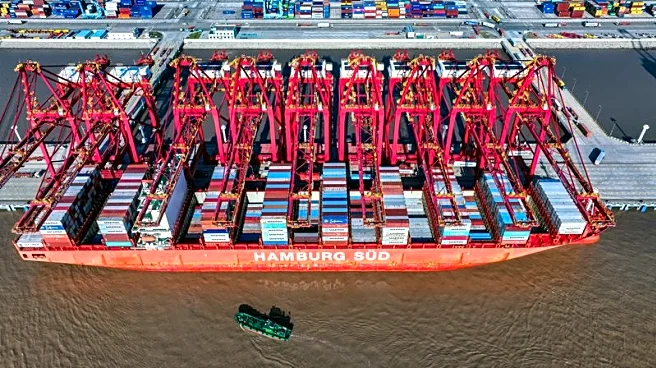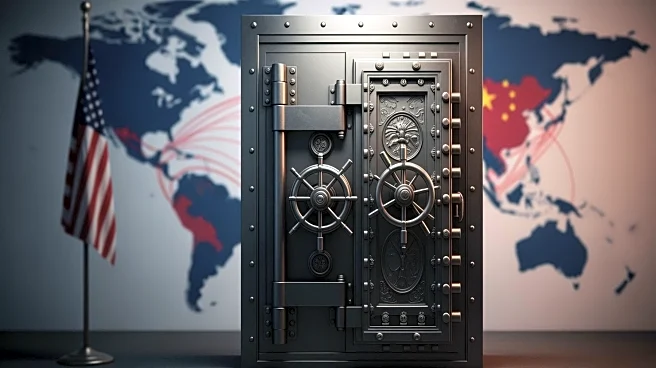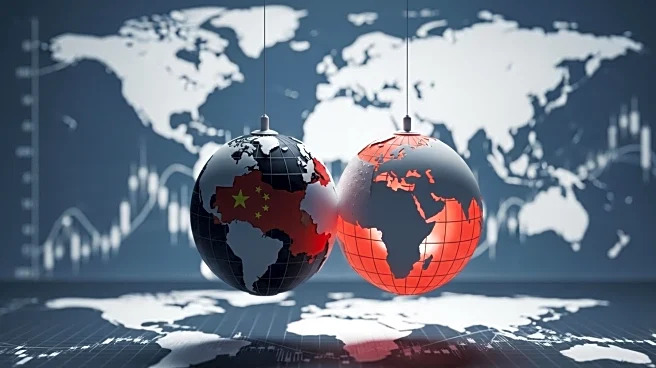What's Happening?
President Trump has announced that the new tariffs he plans to impose on Chinese imports are economically unsustainable. In a recent interview, he acknowledged that the cumulative total tariff rate of
157 percent is not viable for the U.S. economy. Despite this, Trump believes his strategy could still succeed, asserting that China has 'forced' him into this position. The proposed tariffs include a 100 percent increase on Chinese imports, set to take effect from November 1. Additionally, Trump has announced further export controls on software exports to China. This move comes in response to Beijing's decision to expand export controls on rare earths, requiring permits for exporting 12 of the 17 critical metals. These measures are expected to be implemented in November or December.
Why It's Important?
The imposition of these tariffs could have significant repercussions for the U.S. economy, potentially leading to increased costs for businesses and consumers. The tariffs are part of a broader trade conflict with China, which has already strained relations between the two countries. The economic impact is expected to be substantial, with businesses potentially facing over $1.2 trillion in costs this year. The majority of these costs are likely to be passed on to consumers, affecting prices and potentially slowing economic growth. The situation also highlights the ongoing tensions over technology transfers and market access between the U.S. and China.
What's Next?
A meeting between President Trump and China's President Xi Jinping is anticipated in South Korea in late October. This meeting could be crucial in determining the future of U.S.-China trade relations. Stakeholders, including businesses and political leaders, will be closely monitoring the outcomes of this meeting. The potential for negotiations or further escalation in trade tensions will be a key focus, as both countries navigate the complex dynamics of their economic relationship.












